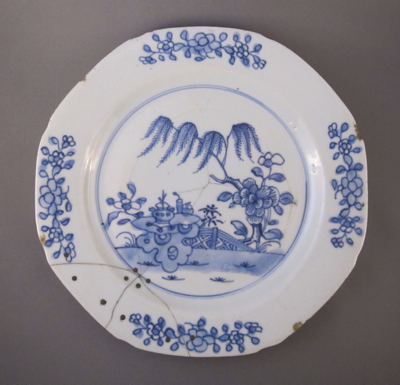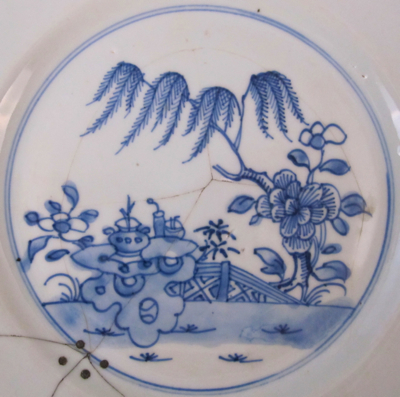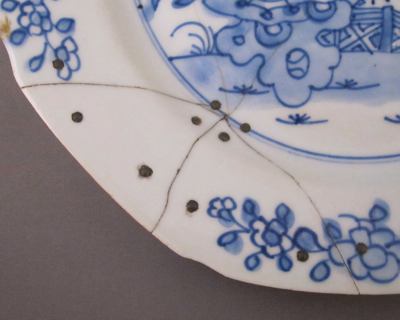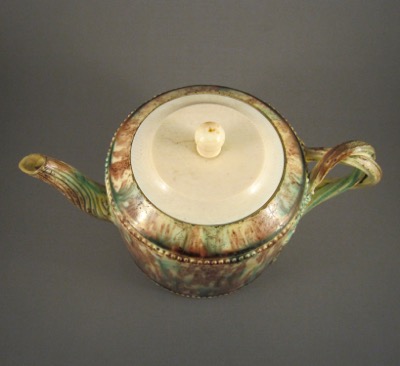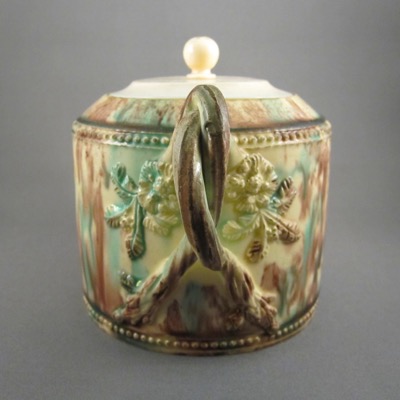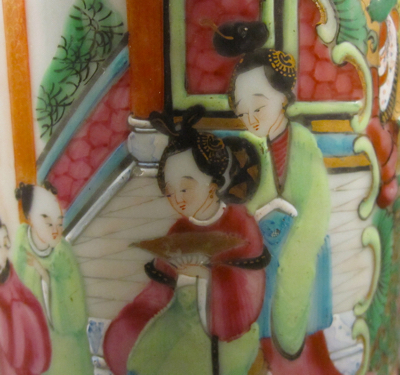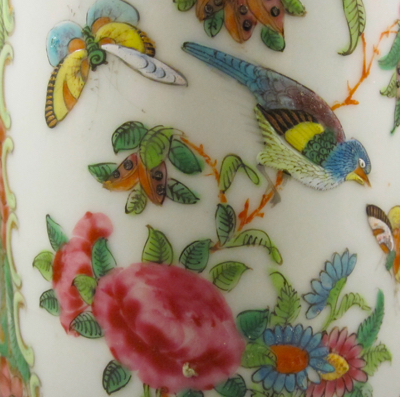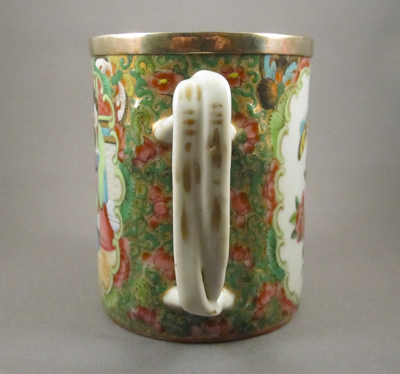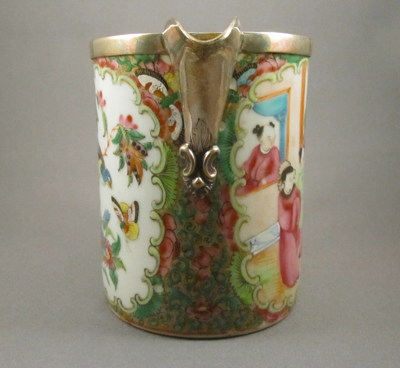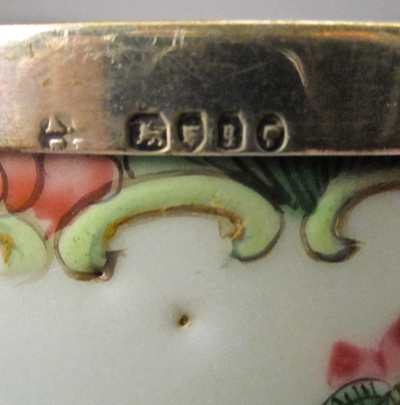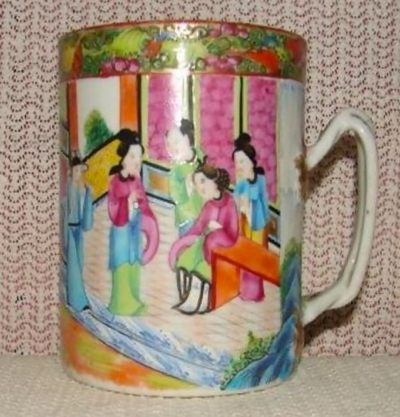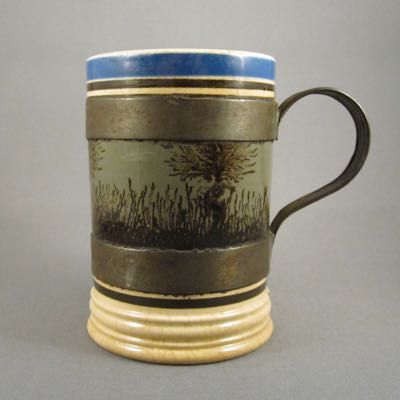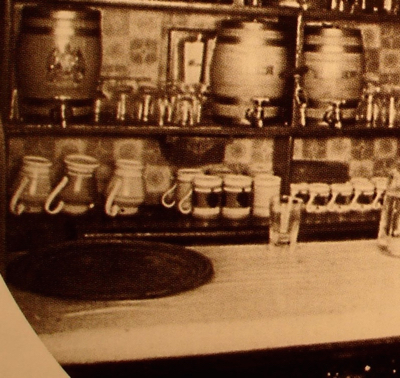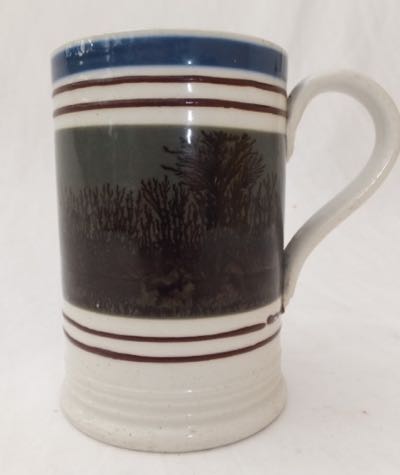This early 1700s hexagonal porcelain plate was made in China during the Kangxi Period (1662-1722). It has an unglazed hexagonal rim and foot rim, with a cobalt blue underglaze garden design and floral border. It measures 9 inches in diameter.
After the plate took a tumble, it was put back together using three large metal staples, aka rivets, as well as an unusual pewter plug. Unlike the majority of the staple repairs I come across, the holes drilled to accommodate the staples go all the way through to the front, resulting in a nice dot pattern. With strong graphics appearing on the front and back of the plate, I deliberately display both sides.
